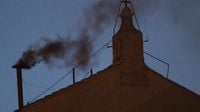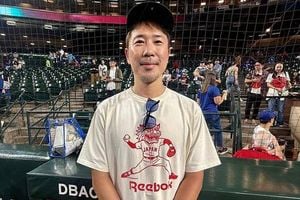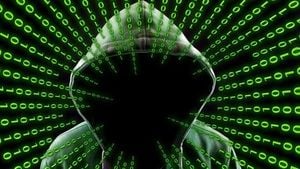On May 7, 2025, the papal conclave commenced at the Vatican with 133 cardinal electors entering the Sistine Chapel to begin the sacred process of selecting the 267th pope, following the death of Pope Francis on April 21. This conclave is particularly notable for its unprecedented diversity, with cardinals representing 71 countries, showcasing the global nature of the Catholic Church.
The conclave's proceedings adhere to a centuries-old tradition, where only cardinals under the age of 80 are eligible to vote. These cardinal electors gather in Rome for discussions on the pressing needs of the Church before the conclave begins. Once the conclave starts, the cardinals are sequestered within the Vatican, specifically in the Sistine Chapel, to ensure confidentiality. They take an oath of secrecy, prohibiting any form of communication with the outside world.
Voting in the conclave is conducted in silence. Each cardinal writes the name of their chosen candidate on a ballot. Four rounds of voting can occur each day—two in the morning and two in the afternoon—until a candidate receives a two-thirds majority, which currently equates to 89 votes. After each voting session, the ballots are burned in a stovepipe chimney atop the Sistine Chapel. Black smoke, or "fumata nera," indicates that no decision has been made, while white smoke, or "fumata bianca," signals that a new pope has been elected.
As the first day of voting concluded, black smoke emerged from the Sistine Chapel, signifying that the next pope had not yet been elected. A crowd of over 30,000 gathered in Vatican Square, eagerly awaiting the smoke signals. The conclave is set to continue with a second day of voting on Thursday, May 8.
The voting process is straightforward yet shrouded in secrecy. Each conclave member writes their choice on a paper ballot slip, folds it, and carries it to the altar before depositing it into a special urn used exclusively for this purpose. Cardinal electors are instructed to write their votes in a manner that cannot be identified as theirs, ensuring anonymity. For those unable to attend in person, due to illness or infirmity, ballots are cast from the Domus Marthae Sanctae and transported to the Sistine Chapel.
Cardinal Jean-Paul Vesco, the archbishop of Algiers, expressed that it would be "unexpected" for the conclave to extend beyond Friday, May 9. If a clear choice has not emerged after three days, balloting will be suspended for 24 hours to allow the cardinal electors time to reflect. Historically, since 1831, no conclave has lasted more than four days.
While the conclave is underway, the 133 voting cardinals have taken an oath of secrecy. This means they will be without modern technology for the duration of the voting process, as all recording devices, including cellphones, are prohibited. Technicians have ensured that no secretly installed bugs or similar devices are present in the Sistine Chapel or adjacent areas.
The conclave is the most diverse in history, with the majority of cardinals hailing from Europe, including 17 electors from Italy, five from Spain, and five from France. North America has 16 cardinal electors, including 10 from the United States. Additionally, there are four from Central America, 17 from South America, 18 from Africa, 23 from Asia, and four from Oceania. Argentina, the home country of Pope Francis, has four cardinal electors.
As the conclave progresses, the prospect of an American becoming pope remains "very unlikely," according to Dr. Miles Pattenden, a historian of the Catholic Church. However, an American cardinal, Robert Prevost, has emerged as a front-runner for the papacy, as noted by Father James Martin, a papal contributor for ABC News.
The conclave's voting process is steeped in tradition and secrecy, marking a pivotal moment in the history of the Catholic Church. The anticipation surrounding the selection of the new pope reflects the significance of this event, not only for the Church but for the millions of Catholics around the world.
As the cardinals continue their deliberations, the world watches closely, waiting for the moment when white smoke will rise from the Sistine Chapel, signaling the election of a new leader for the Catholic Church. Until then, the cardinals remain committed to their sacred duty, ensuring that the next pope is chosen with careful consideration and respect for the traditions that have guided the Church for centuries.




